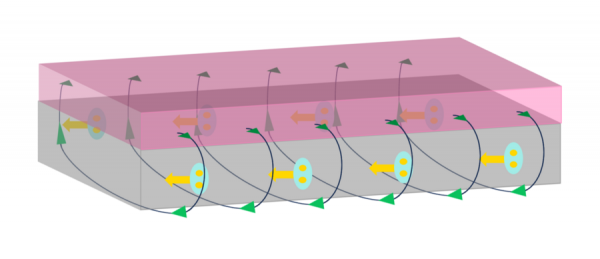MIT scientists and their colleagues have created a simple superconducting device that could transfer current through electronic devices much more efficiently than is possible today.
MIT scientists and their colleagues have created a simple superconducting device that could transfer current through electronic devices much more efficiently than is possible today. As a result, the new diode, a kind of switch, could dramatically cut the amount of energy used in high-power computing systems, a major problem that is estimated to become much worse. Even though it is in the early stages of development, the diode is more than twice as efficient as similar ones reported by others. It could even be integral to emerging quantum computing technologies.
The work, which is reported in the July 13 online issue of Physical Review Letters, is also the subject of a news story in Physics Magazine.
“This paper showcases that the superconducting diode is an entirely solved problem from an engineering perspective,” says Philip Moll, director of the Max Planck Institute for the Structure and Dynamics of Matter in Germany. Moll was not involved in the work. “The beauty of [this] work is that [Moodera and colleagues] obtained record efficiencies without even trying [and] their structures are far from optimized yet.”
“Our engineering of a superconducting diode effect that is robust and can operate over a wide temperature range in simple systems can potentially open the door for novel technologies,” says Jagadeesh Moodera, leader of the current work and a senior research scientist in MIT’s Department of Physics. Moodera is also affiliated with the Materials Research Laboratory, the Francis Bitter Magnet Laboratory, and the Plasma Science and Fusion Center (PSFC).
The nanoscopic rectangular diode — about 1,000 times thinner than the diameter of a human hair — is easily scalable. Millions could be produced on a single silicon wafer.
Read more at Massachusetts Institute of Technology
Image: In one design of the new superconducting device, the diode consists of a ferromagnetic strip (pink) atop a superconducting thin film (grey). The team also identified the key factors behind the resulting current that travels in only one direction with no resistance. Credits: Image courtesy of A. Varambally, Y-S. Hou, and H. Chi.






